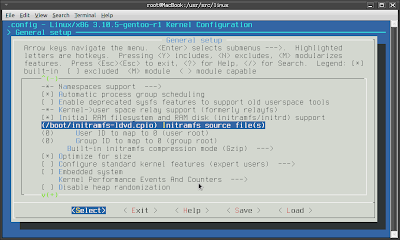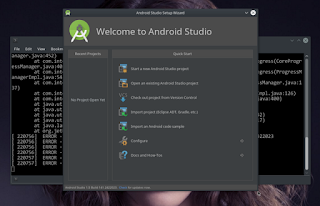No Doubt BlackBerry Z10 is One of best Device released in first Q 2013, running Qualcom Snapdragon S4 Processor, Dual Core 1.5 Ghz krait with 2 GB RAM is powerful device, Blackberry 10.0 OS make the device butter smooth. Physical appearance is beautiful, slim and slick, capcative touch screen covered by anti scratch glass made the device having luxury appearance. 4.2 inch screen size is really fit with my taste. I do like medium screen size and do not like large screen, what I mean medium screen size is between 4.0 - 4.5 inch. Z10 casing material is minimalistic plastic, personally I thought, it is NOT make Z10 look like budget phone, the appearance still great and great to hold on hand.
Well, in Indonesia, before officially available on retail shop, some addicts hoke up the device at IDR 12,000,000.- price which is ridiculous ( in average about USD 1,200.-) At the point of time of Pre-Order opened, in bundle with operator (but NOT CARRIER LOCKED), released price is IDR 6,400,000.- equivalent to USD 640.- in August 2013, the price maintain at IDR 5,000,000.- up to IDR 4,300,000.- (usd 500 - usd 430). Indonesia is the country with biggest blackberry users, at City like Medan, Jakarta, Bandung, Jogya, Semarang, Surabaya, Makassar, manado, Balikpapan, Samarinda ... we can easily see a lot or people actively using their BlackBerry in Sjopping Mall, offices, halte bus, coffee shops. BlackBerry is like one of urban symbols
I have been Android user since very beginning, but social environment pressure pushing me to hold BlackBerry, most of my college, working partners, friends and family are using Black Berry. I hoke up Z10 for about four months with almost 2 months, I let Z10 laying down in my drawer. I personally pissed with Z10 battery life, I was one don't wanna to carry power bank or spare battery went everywhere, it's really annoying. As a member of CrackBerry Forums, I went there recently, many of complaining posts relating to battery life, but some user experienced GREAT BATTERY LIFE, standing for 10 - 12 hours in moderate usage is considering great. My Z10 only having 5-6 hours on low usage on official update 10.1.0.4828. Okay .... My Set up : Network 3G & 2G auto, Wifi OFF, Nfc OFF, Tethering OFF, Bluetooth OFF all times, 2 email account with push feature off and update interval every 24 hours, 6 BBM Groups with I personally Active for 2 group only, almost No web browsing, NO facebook, NO LinkdIN, NO Twitter, NO evernote, (I'm far away from social networking addict), 5-6 voice calls @ average 2-4 minutes every call, 30-40 text message, NO MMS, WhatsApp account which is only 3-5 chat everyday, 2074 contact syncing on google CardDAV protocol , with 10.2.0.1371 I got 7-8 hours, Now I flash with 10.2.0.1371 I got 6-7 hours usage.
According to forums, in updating BlackBerry Z10, need certain ceremony. Hmmm ... okay, I will follow. This is my update ceremony
- Full charged of battery
- Connect to BB Links and perform back up
- Security Wipe and let the device off
- Since I'm on Win 7 x64, running as administrator for BlackBerry OS Update utility, where I DID NOT CONNECT the device to PC via USB
- At the point on PC screen, windows terminal informing ... connect to bootrom. I connected the OFF device to PC via USB
- Device updating the OS smoothly
- Device ON herself
- Security wipe post update (as suggested)
- Set up BlackBerry ID
- Reboot
- Device swithced ON, connect to Links via PC
- Perform Restore data only, No Setting restore, No Media Restore
- Rebooting
- Set up two email account, CardDAV online contact with Google
- Redownload whatsapp and resetting up
- Switched OFF, ALL LED ALERT, sound alert on for Personal BBM, Text Msg, PIN Msg, the rest ALL OFF, including other applications
- Rebooting with all above, I disconnected from electrical wall plug with full battery at 07.00, the device die at 15.00, I gest the usage duration less than 5 hours, since most time the device lay down in my pocket or on office desk
I have TWO SIM card, one for personal usage which is 24 hours stand by, one for office usage which is I switched off at 22.00 - 05.00. I wish to put my personal SIM in Black Berry since this is prepaid scheme, and very handy to manage subscription ON DEMAND. My personal SIM is also binding to whatsapp, line chat account, wireless Banking.Now I toke un-announced SIM Card just for make BalckBerry online, and use my Lenovo P700i with dual sim to make my TWO Sim online. I have No problem to carry TWO DEVICES, but NOT THREE DEVICES, thus dual sim device is current best solution. I still able to deactivate official SIM at 22.00 - 15.00 ... the problem Lenovo P700i is not really a device I want to use as daily bullets. I'm interesting in S3 mini, otherwise I will be happy to use HTC One V. I will test this Z10 with 10.2 leaked OS for a month and let see what happening ....



















